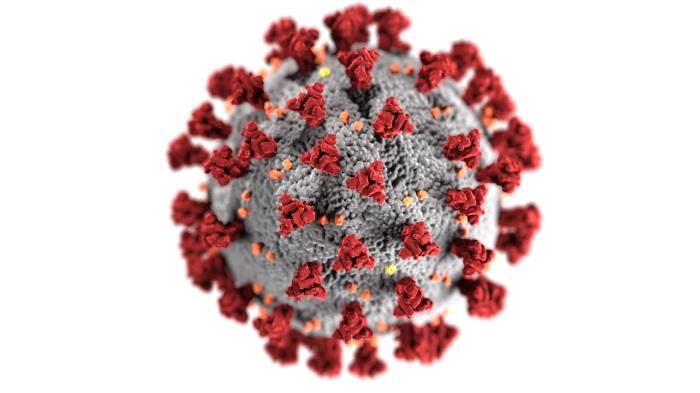At the University of Michigan, the Biosafety Level 3 (BSL-3) and Animal Biosafety Level 3 (ABSL-3) facilities are integral to infectious disease research, offering a secure setting for examining serious pathogens. With support from the Biosciences Initiative (BSI), these labs are tailored for research on high-risk agents, playing a pivotal role in advancing our understanding and management of infectious diseases.
Understanding BSL-3 and ABSL-3 Laboratories
The BSL-3 and ABSL-3 facilities are specialized environments designed to facilitate safe research with Risk Group-3 microbial pathogens, which pose a significant risk of airborne transmission and serious disease.
As Philip Hanna, Ph.D., director of the BSL-3 facility, emphasizes, safety is the paramount concern in these labs, dictating the stringent engineering controls, protective equipment, and comprehensive biosafety training provided to all personnel. These facilities are equipped to handle biological materials, with safety infrastructures tailored to prevent any potential release of dangerous microbes into the community or environment.
These facilities feature advanced containment measures, including High-Efficiency Particulate Air (HEPA) filtration at multiple levels and double interlock door systems, ensuring a controlled environment where high-risk pathogens can be studied with minimized risk of exposure.
Dalis Collins, DVM, DACLAM, Facility Director of the ABSL-3 Containment Laboratory, explains that ABSL-3 work allows for studying diseases in whole organisms, offering insights beyond what cell lines or organ-on-chip models can provide, especially for complex diseases like COVID-19 that affect multiple body systems. This approach is essential for understanding the intricate interplay of disease impacts across different bodily functions.
Role of BSL-3 and ABSL-3 in Research
Prior to 2019, U-M’s BSL-3 facility facilitated research on a wider variety of microbes. However, in early 2020, in response to the escalating COVID-19 crisis, the lab dedicated all its resources exclusively to SARS-CoV-2 research. The concentrated effort on SARS-CoV-2 at the BSL-3 facility led to several significant research projects and collaborations.

“Without BSL3 facilities, there were many things we could not do to respond to the SARS-CoV-2 pandemic,” Says Aubree Gordon, Ph.D., director of the Michigan Center for Infectious Disease Threats (MCIDT). “If we want to grow that virus and evaluate its risk, especially with the mutations we see in the community, we depend on these research centers due to their ability to protect both investigators and the public from the diseases we study.”
Here are a few recent examples led by MCIDT affiliates Jonny Sexton, Ph.D., and Christiane Wobus, Ph.D., that highlight its capabilities and impact.
One notable project conducted by the Center for Drug Repurposing used AI to screen over 1,400 FDA-approved drugs, identifying several potential candidates for COVID-19 treatment, including a common dietary supplement. This research demonstrates how the BSL-3 enables innovative, high-throughput screening processes crucial in the rapid response to the pandemic.
Another groundbreaking development from U-M engineers and immunologists was the creation of a durable coating capable of neutralizing the COVID-19 virus and other germs within minutes. This invention represents a significant advancement in surface disinfection technology, with potential applications in a wide range of public and clinical settings.
Explore the details of these discoveries in these articles on the drug repurposing research and the development of the antiviral coating.
Access and Utilization of BSL-3 and ABSL-3
Gaining access to the BSL-3 and ABSL-3 facilities involves a collaborative process with the Principal Investigator (PI), the Institutional Biosafety Committee (IBC), and Environmental Health and Safety (EHS). The PI must submit a BSL-3 application to the IBC, and all work must be registered and approved. Users must then complete a training regimen in coordination with EHS to ensure safety and compliance.
Currently, the focus at the University of Michigan’s BSL-3 and ABSL-3 facilities is predominantly on SARS-CoV-2 research, given its global impact. However, Hanna, extends an invitation to the research community to explore utilizing the non-animal BSL-3 lab, emphasizing the broader mission to tackle various microbial challenges
“If you are inspired to apply your new ideas and expertise to a problem involving a Risk Group-3 infectious agent – we will assist you. says Hanna. “This call to action underscores the facility’s commitment to addressing a wide range of infectious diseases in the future.”
For more detailed information on accessing these facilities and future research opportunities, potential users are encouraged to reach out directly to:
BSL3
- Philip Hanna – pchanna@umich.edu
ABSL3
- General Email – ULAM-ABSL3@umich.edu
- Dalis Collins – collinde@med.umich.edu
Takeaway
The BSL-3 and ABSL-3 facilities at the University of Michigan are vital for conducting high-level infectious disease research. By offering advanced tools and strict safety protocols, these labs empower scientists to explore complex questions in infectious disease, significantly contributing to our understanding and response to global health threats.

